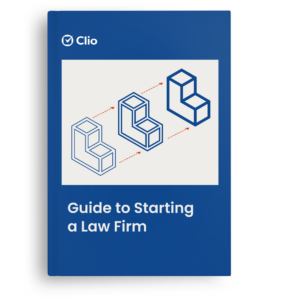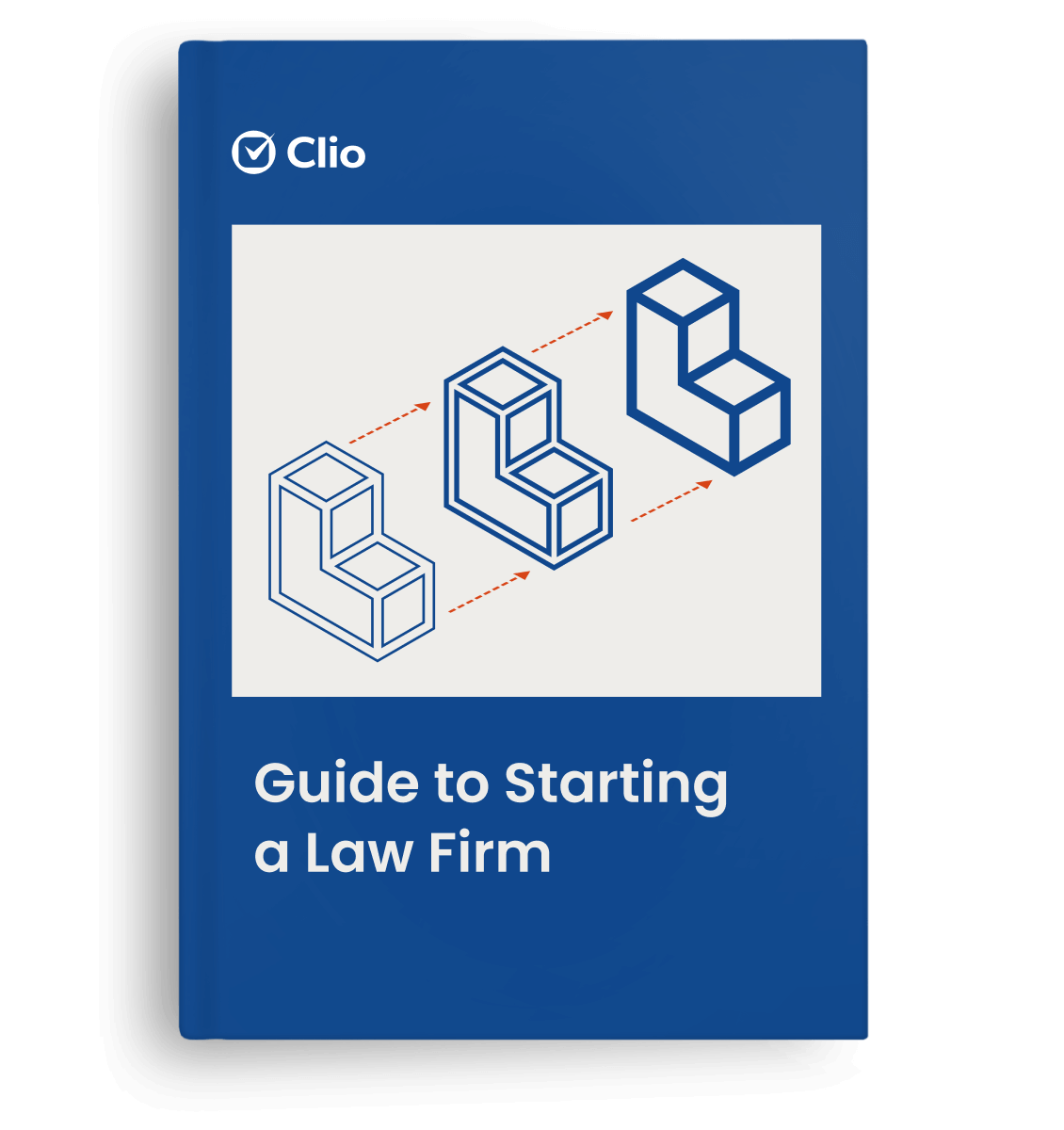When a legal matter reaches its conclusion, you need to close the loop—which means sending a closing letter to clients. Without a formal case closure letter, you risk ambiguity in your attorney-client relationships, along with the risk of unintentional malpractice. Also, if you fail to send a letter at the end of a case, you miss out on an opportunity to solidify a positive professional relationship with clients who may need legal representation in the future.
If you aren’t regularly sending closing letters to clients, it’s time to start. In the following guide, we’ll show you why you should send closing letters to clients—and how to write them. To make the process easier, we’ve also included a sample closing letter to clients.
What is an attorney closing letter?
An attorney case closing letter, also known as a termination of representation, is a formal document that officially ends their representation of a client in a matter.
Why sending attorney client closing letters is essential
Just as you should send a non-engagement letter when you don’t move forward with a client at the start of a legal issue, you should always close cases with a formal end of representation letter.
Here are some of the key reasons why closing letters to clients are so important:
- They provide clear documentation. While a close out letter to a client is relatively quick and simple to produce , it’s a powerful and effective way to document the end of a specific attorney-client relationship.
- It can close the chapter, but doesn’t have to close the book. Bear in mind that a case-closing letter is just a formal way to note the conclusion of a specific case. It doesn’t mean that you can’t represent the client in the future on other matters.
- They help you avoid unintentional miscommunication about representation. Sending a closing letter to clients helps you avoid challenging ethical situations where a client thinks that you’re still their attorney after you’ve closed their case. Putting your end of representation for a specific matter in writing ensures they’re aware of the situation. It also helps protect you from erroneous claims that you didn’t perform duties that you were responsible for, which is key, as miscommunication is a common source of malpractice claims for lawyers. Essentially, closing letters are a prudent risk management tool in the event of a future dispute relating to the scope or duration of your representation.
- They provide customers with a client-centered experience. Remember: While you deal with legal issues every day, it’s likely a stressful and uncertain time for your clients. By taking the time to communicate clearly about the status of their matter—even at the end—you reduce uncertainty and help put clients at ease.
4 Best practices when sending end of representation letters

For a case-closing letter to be most effective, follow these best practices:
1. Be timely
Send a case-closing letter when you’re ending an attorney-client relationship on a matter—that is, when you’ve concluded a case or when you’ve decided to stop representing the client.
2. Understand your obligations—and communicate them to the client
Many jurisdictions have specific requirements relating to closing files, including retention and destruction of case files. For example, under the ABA Model Rules of Professional Conduct, Rule 1.15(a) requires lawyers to retain client account funds and property for five years after termination of representation. Communicating these obligations to clients in a closing letter is paramount to ensuring they understand the impact of closing the file and your firm’s ongoing connection to their information.
3. Be succinct
Your letter should be easy to read and concise. Avoid unnecessarily complex language and prioritize clarity. Be sure to clarify that your client can reach out if they have any questions or concerns relating to the closing of their file.
4. Be consistent
Send a case-closing letter to clients after concluding every case—whether or not you’re hoping for future business from them. To ensure that you’re sending case-closing letters after concluding cases on a regular interval, be sure to add a reminder to send case-closing letters within a particular time frame (for example, within two weeks following the close of a case).
While it may seem counterintuitive to formally end an attorney-client relationship if there may be more opportunity in the future, sending a case-closing letter doesn’t mean that you’re cutting your firm off from a client. Instead, it shows a high level of professionalism and clear communication—which encourages positive reviews and a return to your firm if another legal matter arises in the future.
You may like these posts
How to write an attorney end of representation letter

The secret to writing an effective attorney client end of representation letter is to focus on the key goals:
- Communicate to your client that the case has concluded
- Wrap up any loose ends
- Conclude the case on a positive, professional note
Use document automation to save time and prevent errors
Writing every closing letter to clients from scratch is time-consuming and leaves a lot of room for typos and accidental errors. Instead, consider using document automation tools and being prepared with a closing letter template to save administrative time (and help reduce chances of error) in the future.
Clio Draft’s document automation software, for example, allows you to turn your firm’s existing Microsoft Word files into reusable, fillable templates. This means that when it’s time to send a closing letter, you fill in the necessary details instead of writing one from scratch. You can auto-populate your Clio Draft template with client contact and matter information directly from Clio Manage—saving even more time.
Emma Rucker, Managing Paralegal at Cohen Family Law, explains how quickly the time savings that come with document automation can add up.
“Before the switch to Clio Draft, creating a document from a template could take 20–30 minutes, which adds up if you’re drafting multiple in a day,” Rucker explains. “Cumulatively, that’s hours of lost time that we could otherwise put toward productivity and billables.”
Watch our webinar to learn more about the benefits of document automation for law firms.
What to include in a closing letter to clients
While your case-closing letter should be tailored to your firm and your client, consider including the elements below.
- Specifics about the case and its status. Clearly state which case you’re referring to—especially if there are multiple matters at hand or if you take on future matters for the client. List the case number and also briefly describe the case in the body of the letter. Also, note that the matter is closed or concluded.
- A final billing and payment statement. This is considered best practice for transparency, and should either detail the outstanding balance or confirm the payment has been made in full.
- The date. Date the letter and specify when the case has concluded.
- The reason for the end of representation. Briefly note the reason why you will no longer be representing the client on the matter at hand—whether it’s because the case has concluded or there’s another reason (for example, if your practice is closing).
- The status of any client documents. Let the client know if you will be retaining case documents and files and for how long. For example, if you need to keep case files for a certain number of years in your jurisdiction according to your document retention policy. If you are returning original client documents with the letter, state that in the letter and specify what’s enclosed.
- Next steps. If applicable, list any actions or next steps that the client needs to take care of or is responsible for. This could include a note regarding the final bill for the matter.
- A feedback request. Client feedback is key to effective client communication and your law firm’s continued success, so ask for it. This could be as simple as enclosing a feedback questionnaire.
- A note of appreciation. Thank the client for the opportunity to represent them. Ending the letter on a positive note goes a long way towards making a client feel valued.
What not to include in an attorney case closing letter
Even though being thorough is generally advisable, it is possible to be too thorough when it comes to closing letters. Here are two common types of information you should exclude:
- Personal financial information (such as bank account details)
- Medical information (such as the client’s medical conditions)
| Clio tip: If you are sending your attorney closing letter via email or email clients regularly, consider including a confidential email disclaimer at the end of every email to let the email receiver know not to share the information in that email. Learn more about confidential email disclaimers and how to set them up. |
Sample closing letter to clients

Need an example? The below letter shows one way you could approach a case-closing letter to a client. Note: This sample closing letter is for reference only. Feel free to use it as a template, but you must customize your letter to your firm and your specific clients.
[Date]
Re: Termination of Representation, Case/File [#0000]
Dear Ms. [Client]:
Thank you for choosing me to represent you with your [describe matter]. I am writing this letter to inform you that this case is closed as of the date of this letter.
Enclosed are all of the original materials regarding your case that are in my firm’s possession, including [specify documents, if appropriate]. Please let me know by [date] if there is anything else that you believe is still in our firm’s possession that should be returned. Otherwise, I will assume that you have reviewed the documents and have everything that you need. While we are closing the file on this matter, we will keep a copy for a period of at least [specify time period].
I would like to take this opportunity to thank you for choosing me to represent you. I sincerely hope that your experience with my firm was satisfactory and that you may consider [law firm name] for future legal work. [With this in mind, I would greatly appreciate it if you could complete the enclosed feedback questionnaire.]
While this concludes my representation of you regarding this legal matter, please don’t hesitate to reach out in the future should you have any further legal needs and wish to discuss retaining my services again.
Sincerely,
[Name]
[Law firm name]
Clear communication will go a long way

Throughout your client’s journey with your law firm, clear communication always goes a long way—including at the end of your representation. This is why attorney closing letters to clients are so important. Closing letters give you a simple and effective way to tie up loose ends, avoid unintentional miscommunication, and deliver excellent client service.
Still, time can be a limiting factor, and it can be challenging for busy lawyers and legal professionals to find the time to write closing letters from scratch for every client.
Luckily, document automation takes much of the time, effort, and risk of error out of the equation. The key to writing effective closing letters quickly and efficiently is to start with a solid template, then customize it to include all pertinent details for each case and client relationship. Document automation tools make it easy to create templates and then fill out applicable portions automatically (which reduces the chances of human error).
This means you can create letters that close the loop for both your firm and your clients in less time and with less effort—which is a win for all parties.
To learn more about how cloud-based legal document automation tools can free up more of your time, schedule a free Clio Draft demo today.
Note: The information in this article applies only to US practices. This post is provided for informational purposes only. It does not constitute legal, business, or accounting advice.
How do you tell a client they’re not a good fit
Clear communication is key when telling a client that they aren’t a good fit for your law firm. Start with outlining the consultation details, offer a sincere apology, provide a clear reason for declination, and, if it makes sense to do so, offer a recommendation for alternative legal representation.
What is an attorney disengagement letter?
An attorney disengagement letter is a piece of written communication that lets a client know that your firm is withdrawing from an active matter. The attorney has to withdraw for whatever reason, or in some cases, is firing the client.
How does an attorney end a letter?
When ending a letter to a client—especially if you’re ending a professional engagement—it’s generally best to keep things on the more formal side, even if you’re on somewhat friendly terms with the client. “Sincerely,” or a similar signoff is a safe bet.
We published this blog post in April 2021. Last updated: .
Categorized in: Business









